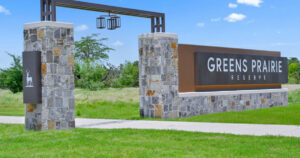Texas A&M’s Recent Provost Search: A Closer Look at the Candidates
College Station, Texas – Texas A&M University has been buzzing with activity recently, particularly concerning the role of Provost. After a review of prospective candidates for the executive vice president and provost position—the institution’s second in command—insightful documents have emerged that detail the search committee’s findings and recommendations.
Insights on the Selection Process
The search committee encountered several candidates during the 2023 search, and after careful scrutiny, it was recorded that the committee wasn’t particularly enthusiastic about Provost Alan Sams as a leading candidate. His recommendations came amidst a significant shake-up within the university. The panel comprised 15 faculty and staff members, who analyzed the strengths and weaknesses of three finalists: Dr. Eli Jones, Dr. Andreas Polycarpou, and Alan Sams.
Who’s Who in the Provost Search
Dr. Eli Jones emerged as a standout candidate, characterized as a dynamic and experienced leader. The search committee noted his ability to authentically connect with students and colleagues, making him a trusted figure. His extensive experience in fundraising and relationship cultivation could serve as a substantial asset, bridging gaps between various stakeholders at the university. However, there were subtle concerns about his specificity when answering follow-up questions, which the committee felt was a crucial aspect of effective leadership.
Then there’s Dr. Andreas Polycarpou. Described as a surprisingly successful candidate, Polycarpou wowed the committee with his genuine concern for the student experience and his proactive engagement skills. Aiming for a collaborative atmosphere, he emphasized the importance of bringing the right stakeholders into important conversations. Despite these positive attributes, the feedback from those he previously led revealed mixed opinions, making the committee cautious.
On the other end of the spectrum is Alan Sams, the current provost, who faced some uncertainty regarding his position. Documents indicate that while Sams experienced success as a dean at Clemson and Oregon State University, he lacked the strong communication skills expected for such a prominent role. Critics voiced concerns about his perceived muted enthusiasm for the position and doubts about his relational dynamics with staff and students.
What’s at Stake?
Within the university community, an apparent divide in opinion has surfaced regarding Sams’s leadership. Feedback solicited from various stakeholders often pointed towards a need for more transparency and input in administrative decisions. Some suggested that he seemed more suited for special projects rather than the overarching responsibilities of a provost. In a follow-up session with the Faculty Senate, questions arose about the Chancellor’s decision to proceed with a process that targeted underperforming academic programs—widely seen as lacking in faculty involvement and transparency.
Interestingly, the transition has been marked by a significant institutional shift; after previous president M. Katherine Banks resigned, new leadership under Mark Welsh began to address concerns from the faculty about resource allocation and decision-making degree. The push to return authority to the Office of the Provost is a reflection of aligning with faculty desires for shared governance.
Faculty Perspectives Matter
Faculty sentiments echo significantly in this ongoing saga. There seems to be a collective hope that a more inclusive approach can empower staff while laying a constructive path forward for students. The ongoing dialogues point towards a desire for an academic atmosphere where every voice counts, where input is valued, and where the ruling bodies focus on a shared mission—ensuring the remarkable student experience Texas A&M is known for.
The Bottom Line
So, with all dialogues and evaluations considered, what does the future hold for Texas A&M and its leadership structure? As discussions continue, a ray of hope shines bright for a rejuvenated sense of community, shared governance, and responsiveness. The ongoing evaluation may lead to networking betterment throughout the Big Tex community—one that empowers everyone.








